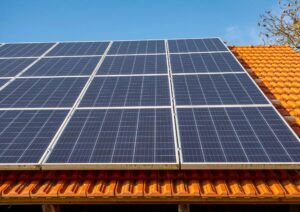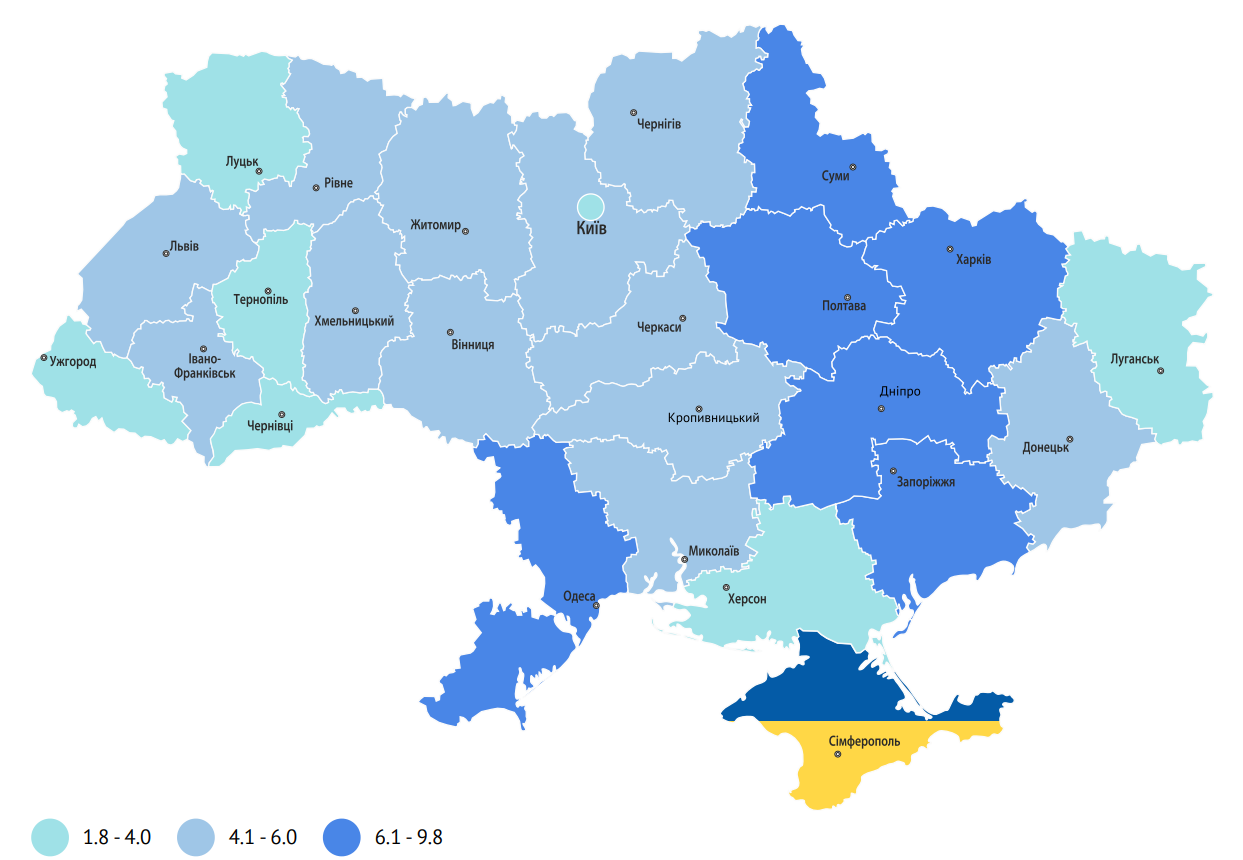
Globus Bank has issued UAH 2 million worth of loans to individuals in the first week of its Solar Loans program, and receives up to 10 applications daily, the bank’s press service reports.
According to the press release, the first loans under the program were issued in late July to customers in Poltava and Rivne. Thus, borrowers received loans of UAH 480 thousand for five and 10 years to purchase hybrid power supply systems consisting of solar panels, an inverter and a battery.
“Ukrainians are very positive about the government’s program of preferential lending for the purchase of renewable energy sources. In my opinion, such programs are a significant opportunity to strengthen the energy independence of an individual citizen, and thus the entire country,” commented Serhiy Mamedov, Chairman of the Board of Globus Bank, on the program launch.
According to his forecast, in the fall, the volume of solar loans issued may reach 100, worth more than UAH 40 million.
As reported, at the end of June, Globus and 16 other Ukrainian banks, which account for 83% of all assets, signed a memorandum on financing projects to implement innovative energy solutions for a period of five to seven years at the discount rate.
Globus Bank was registered in 2007. According to the NBU, as of April 11, 2023, the bank’s shareholders were Olena Sylniagina (100%), Dmytro Polkovsky (16.198866%), Yevhen Varyagin (9.899307%), Serhiy Mamedov (9.899307%), Andriy Pinchuk (9.899307%), and Taras Lisovyi (3.599748%), who indirectly own the authorized capital.
According to the National Bank of Ukraine, as of May 1, 2024, Globus was ranked 26th (UAH 9.4 billion) among 60 banks operating in the country in terms of total assets. As of April 2024. The regional network includes 31 branches.

Ukraine’s women’s sabre fencing team has won gold at the 2024 Olympics in Paris.
In the final, the Ukrainians defeated the Republic of Korea 45:42.
The Olympic champions in team sabre are: Olga Harlan, Alina Komashchuk, Olena Kravatska and Yulia Bakastova.
This is Ukraine’s third medal and first gold medal at the 2024 Summer Olympics in Paris.
Number of unemployed people registered in public employment service as of 30.04.2024 (in thousands)

Source: Open4Business.com.ua

During the war, the Ukrainian market of primary real estate underwent significant changes. Experts note new trends in the behavior of buyers and shifting priorities in the choice of housing. However, the general portrait of the primary real estate buyer remains conditionally divided into several categories, depending on financial opportunities, professional activity and individual needs.
Alexander Poltorak, brand manager of DIM group of companies, draws attention to the fact that buyers have become more demanding to the quality of construction and the timing of projects.
“Now buyers choose almost ready objects, often they are resettlers who start a new life, – notes Poltorak, – They are picky in assessing construction standards and financial conditions, which allows to ensure stable demand”.
The expert notes that the war has significantly changed the behavior of buyers in the business class segment. If before the war investors actively invested in the early stages of construction, now most people choose housing at the final stages or already finished.

Our buyer today is a person who already has his own housing. A lot of transactions take place with regular clients or on recommendation from them. Clients are looking for favorable conditions, often use promotions and installments, even having the full amount to pay.
This approach reflects buyers’ caution in an unstable period, when confidence in the project and the developer’s readiness to complete the object play a crucial role.
According to the expert, about 65% of buyers in the company’s projects are families aged 25 to 45 years old, which represent the capital’s middle class. Among them there are a lot of IT-specialists, company tops, lawyers, business representatives.
About 15% of buyers are investors who consider real estate as a way to preserve or increase their wealth.
However, the behavior of customers during the war has changed: if earlier transactions were closed in a few weeks, now the process can last from a month to six months. The information background and the frequency of shelling in the capital significantly influence the decision of buyers.

On Sunday, rains are expected in Ukraine, sometimes thunderstorms, at night in Chernihiv and Sumy regions, sometimes significant rains; during the day in the western, Zhytomyr and Kyiv regions, in some places, light rain, the Ukrainian Weather Center reports.
Southwest wind with a transition to northwest, 5-10 m / s, in the southern regions gusts of 15-20 m / s in some places.
Temperature at night 17-22°, in the western and northern regions 12-17°; during the day 22-27°, in the southeastern part 27-32°.
In Kyiv on August 4, it will rain at night, no precipitation during the day.
The wind will be mostly northwest, 5-10 m/s.
The temperature at night will be 15-17°, during the day 23-25°.
According to the Borys Sreznevsky Central Geophysical Observatory, on August 4, the highest daytime temperature in Kyiv was 37.7° in 2010, the lowest nighttime temperature was 8.5° in 1907.
On Monday, August 5, in Ukraine, in the eastern, southern, afternoon and western regions, rains with thunderstorms; in the rest of the country, no precipitation.
The wind is mostly northwest, 5-10 m / s.
Temperature at night 12-17°, in the south 15-20°; during the day in the western regions 18-23°, in the southern part, 25-30°, in the rest of the territory 22-27°.
No precipitation in Kyiv on August 5. The wind is mostly northwest, 5-10 m / s.
Temperature at night 15-17°, during the day 24-26°.

A new modular township has appeared in Kherson region, it is located in Chernobaivka community, the Ministry of Reintegration reported on Saturday with reference to the Kherson OVA.
Internally displaced persons, among those who lost their homes because of Russian aggression, large families, families with children, people with disabilities, combatants, elderly people, families of fallen defenders and victims of the Chernobaevka disaster living in Kherson region can settle in the town.
The complex consists of four modules. In each of them there are 21 living rooms for 4 beds. The module has 2 showers, 2 restrooms, laundry room, play area and kitchen-dining room.
All rooms are equipped with appliances, furniture and everything necessary for a comfortable stay. For children there is a playground, where children can spend their free time in an interesting and useful way.
The new modular town is designed for simultaneous accommodation of 336 people.